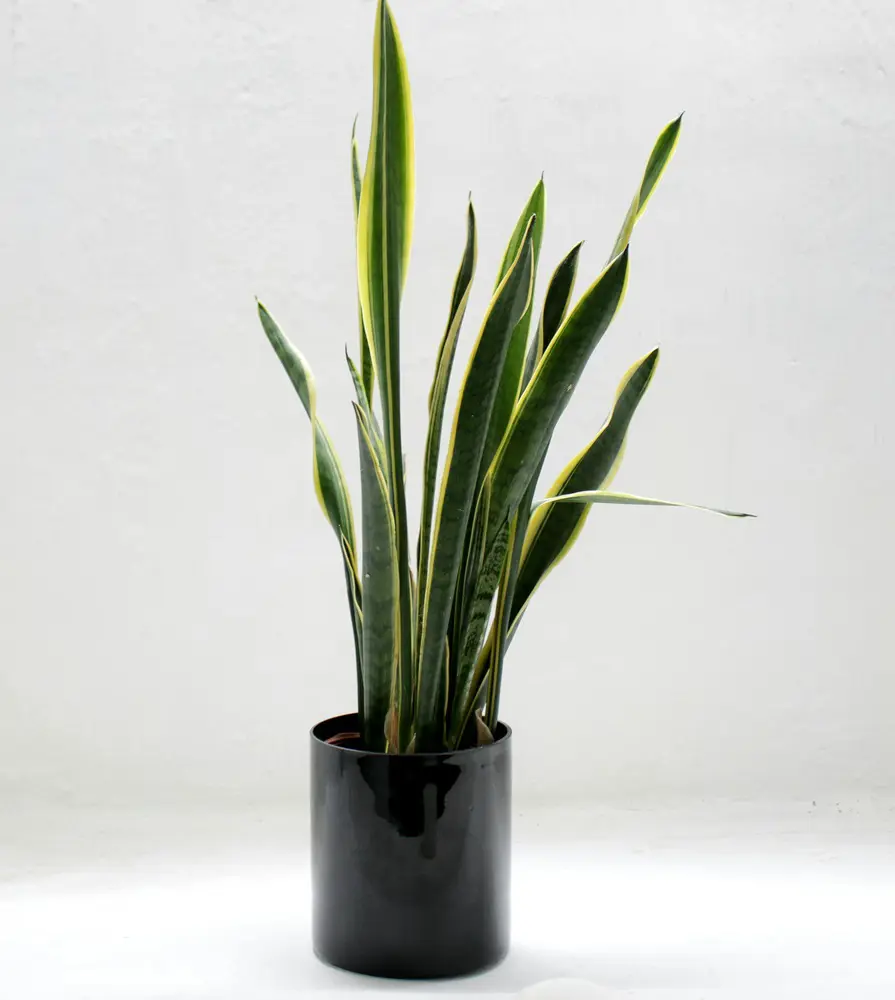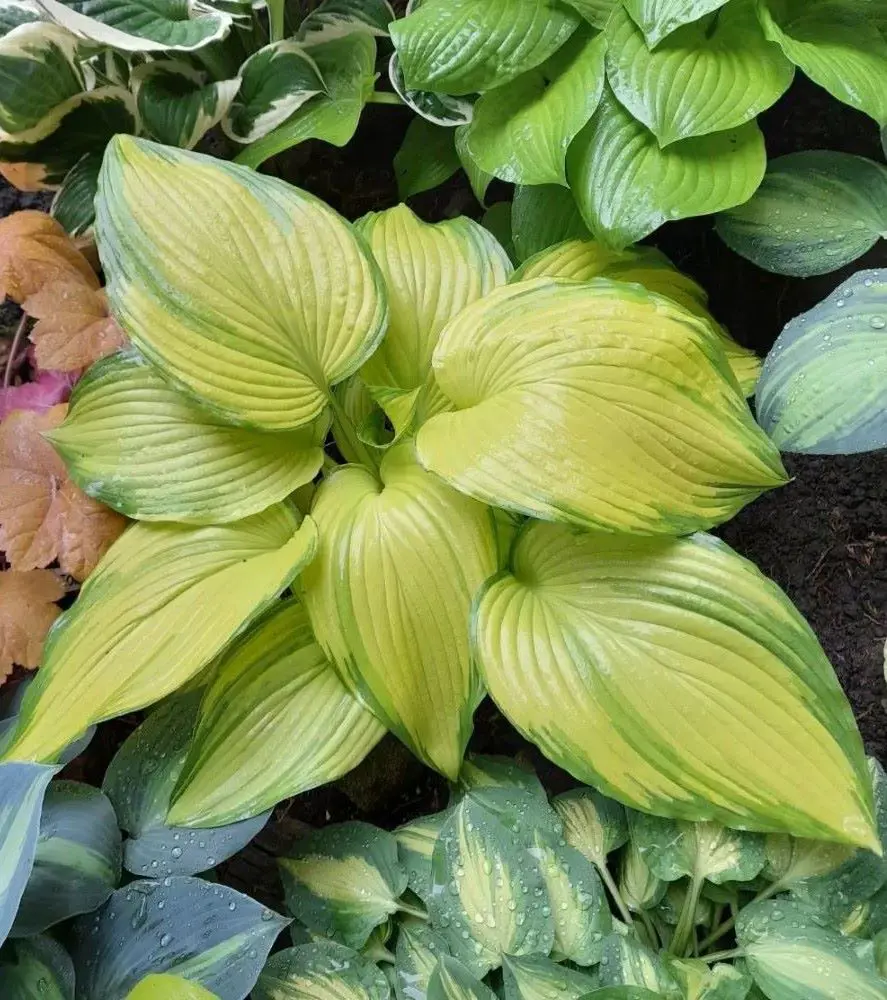Growing and Caring for Rosemary Plants
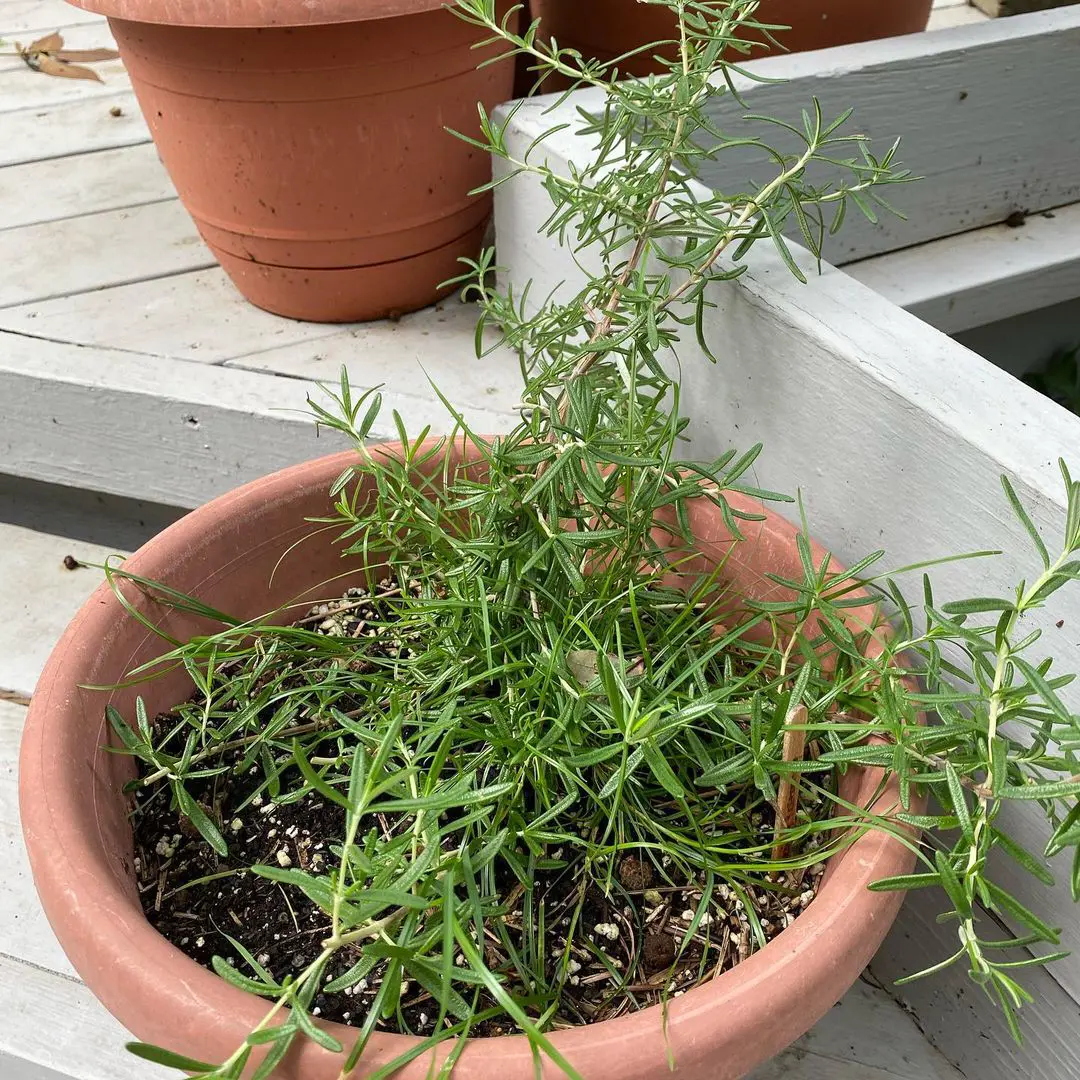
This post may contain affiliate links. If you make a purchase through links on our site, we may earn a commission.
Rosemary is a beautiful, fragrant herb that is easy to grow outdoors as well as in indoor herb gardens. With its needle-like leaves and small blue flowers, rosemary adds a touch of the Mediterranean to any garden or kitchen windowsill.
From selecting the best variety to gathering and preparing your fresh herbs, this article will provide you with all of the information you require to grow and care for your own rosemary plants. Starting with choosing the ideal variety of rosemary to harvest and utilizing your own herbs.
You'll find helpful advice for making sure your rosemary flourishes, regardless of your level of gardening experience.
Rosemary Plant Care
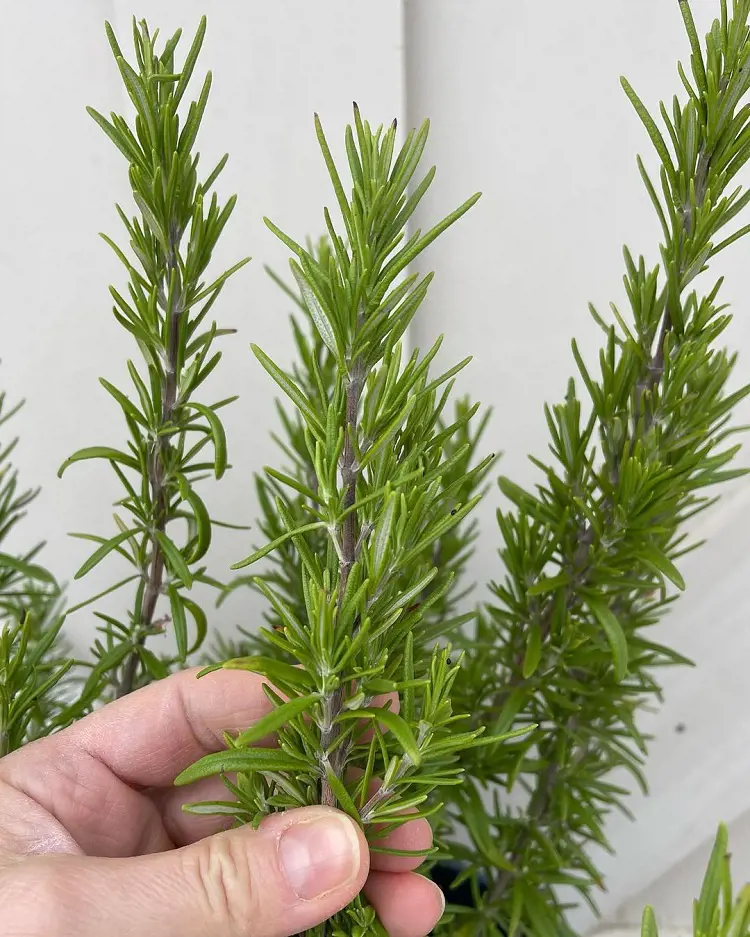
Rosemary is a low-maintenance herb, that needs minimal attention. It thrives with occasional watering, especially in dry spells. While a bit of controlled-release fertilizer in spring can boost growth, the most flavorful rosemary comes from tough, resilient plants.
Essentially, letting it face some challenges enhances its taste. So, go easy on pampering it – let it endure a bit, and you'll enjoy robust, flavorful rosemary for your culinary adventures.
Here's how to grow rosemary plants and care for rosemary easily at home:
Choosing a Variety
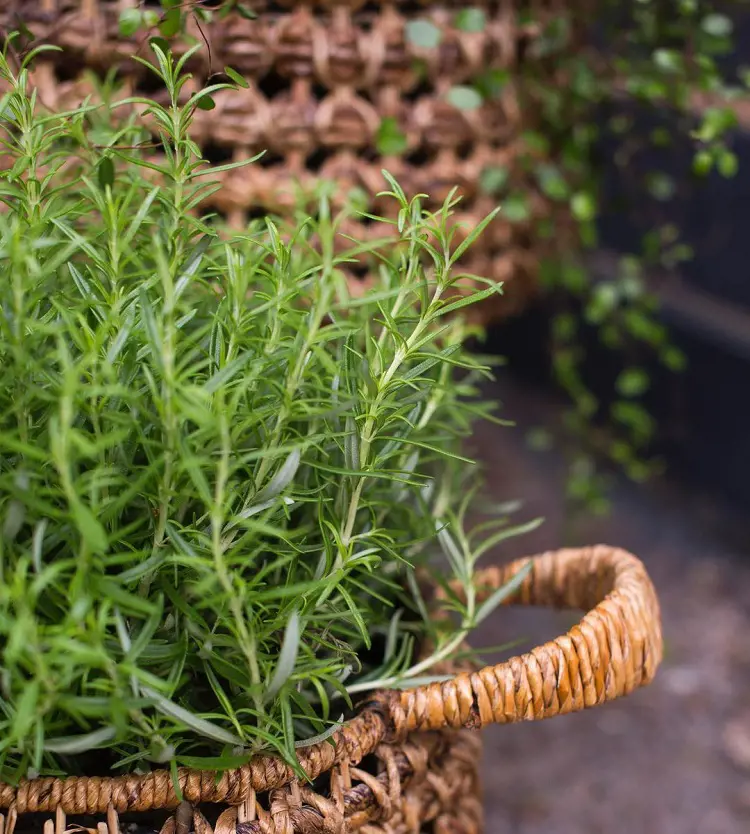
There are many different varieties of rosemary available, each with its own unique flavor and appearance. Some popular varieties to grow rosemary at home include:
Tuscan Blue
This classic variety is known for its strong, upright growth habit, reaching up to 3 feet tall. It has dark green, needle-like leaves and produces beautiful blue flowers in spring. Tuscan Blue is a good all-purpose rosemary, perfect for culinary use and making fragrant rosemary oil.
Hill Hardy
As its name suggests, Hill Hardy is a good choice for colder climates as it's more tolerant of frost than other varieties. It has a more compact growth habit than Tuscan Blue, reaching only about 2 feet tall. Hill Hardy has dark green leaves and produces pale blue flowers. It's another good all-purpose rosemary variety.
Creeping Rosemary
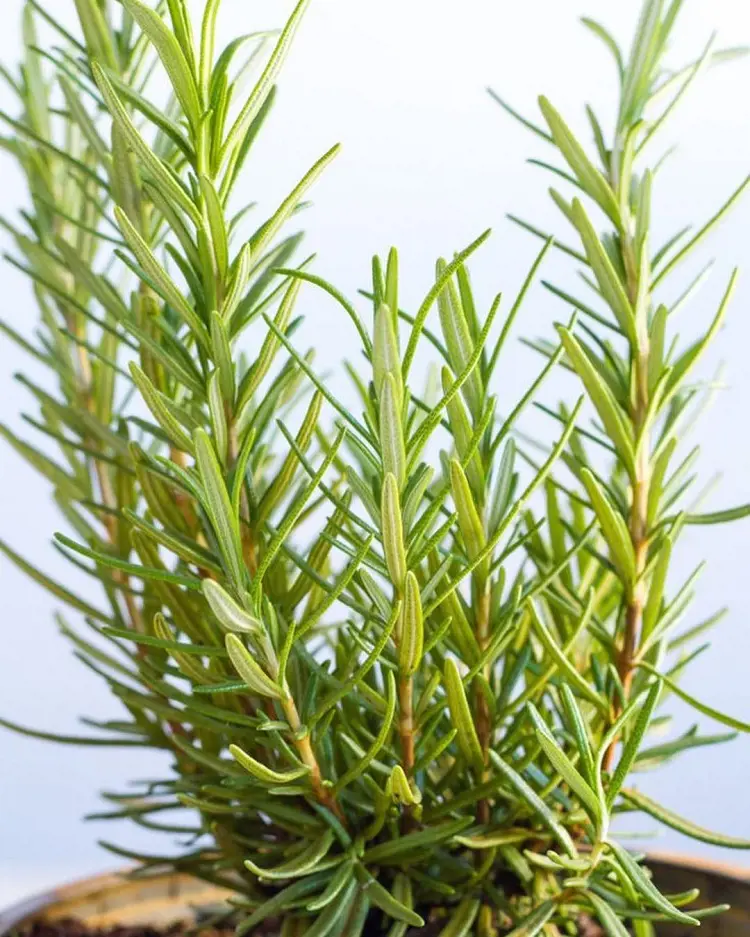
This variety has a trailing habit, making it perfect for groundcovers, hanging baskets, or rock gardens. It has small, green leaves and produces light blue flowers. Creeping Rosemary has a milder flavor than upright varieties and is often used for ornamental purposes.
Golden Rosemary
This variety has trailing stems with bright golden leaves. It's a beautiful ornamental variety that also has a mild, citrusy flavor.
Arno
This variety has a more columnar growth habit than other upright varieties, making it a good choice for small spaces. It has dark green leaves and produces pale blue flowers. Arno is known for its strong, camphorous flavor.
Planting Rosemary Herb
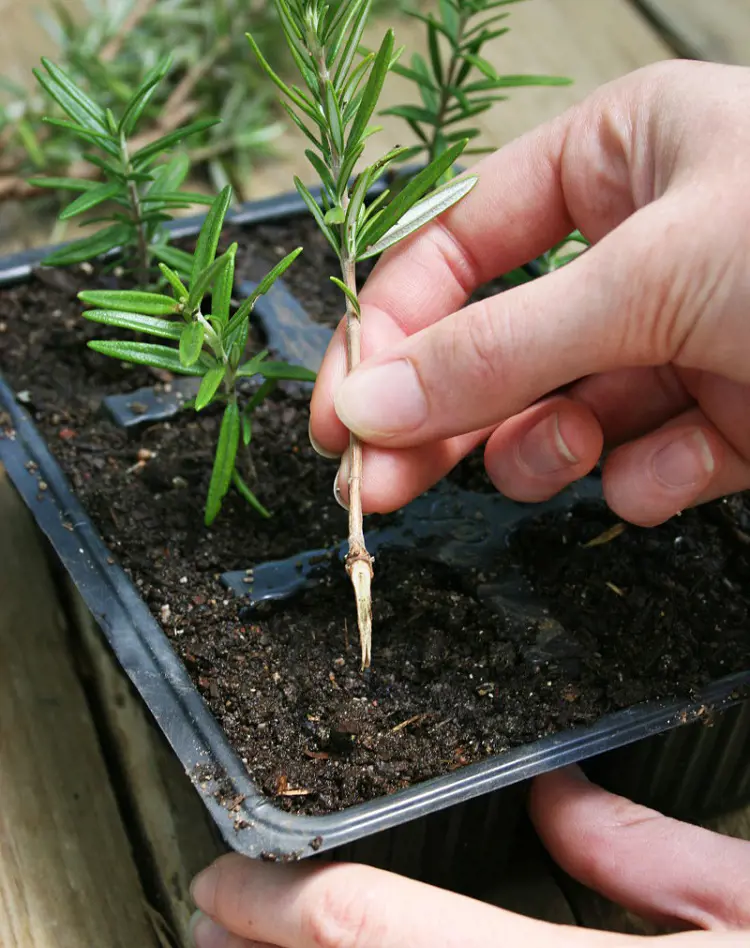
Rosemary herb plants can be grown from seed, cuttings, or transplants.
1. Starting from seed: Rosemary seeds can be sown indoors in early spring or outdoors in late spring or early summer. The seeds need light to germinate, so don't bury them too deeply. Keep the soil moist but not soggy until the seedlings emerge.
2. Taking cuttings: Rosemary can be easily propagated from cuttings. Take 4-6 inch cuttings from healthy stems and remove the lower leaves. Dip the cut ends in rooting hormone and plant them in a moist potting mix. Keep the cuttings in a warm, humid location until they root.
3. Transplanting: If you are buying rosemary plants, choose ones that are healthy and have green, bushy growth. Transplant them into a sunny location with well-draining soil.
Things To Understand While Planting Rosemary
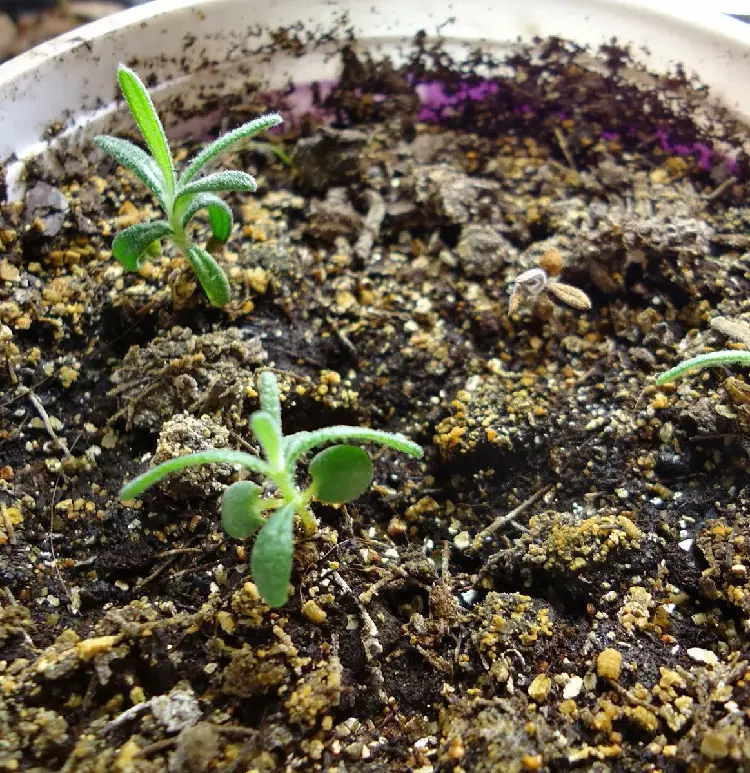
Here are some key things to remember when planting rosemary:
a. Location
Plant your rosemary in a spot that gets a good dose of sunlight, ideally 6-8 hours daily. Rosemary, being a Mediterranean herb, loves the sun. If you stick it in a shady or poorly lit area, it might grow tall and spindly, and the flavor won't be as robust. So, give it the sunshine it craves for the best growth and tastiest results.
b. Soil
Choose soil that drains well, meaning water doesn't get stuck. Rosemary likes a bit of acidity in the soil, so aim for a pH between 6.0 and 7.0 – it's like a measure of how friendly the soil is for plants. Sandy or loamy soil is perfect; think of it like a nice, crumbly texture that lets the water move around just right.
So, for your rosemary to be happy, use soil that doesn't hold onto water too much, has a bit of acidity, and feels light and fluffy.
c. Container Planting
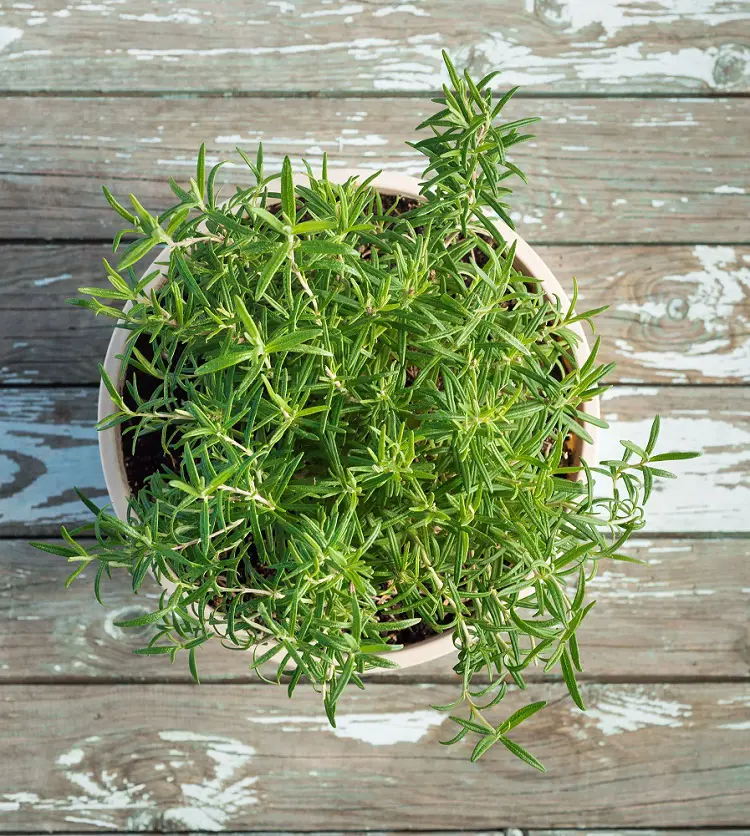
When planting rosemary in pots, make sure the container has holes at the bottom for water to escape; this prevents soggy soil. Opt for a good potting mix, which is like a comfy home for your plant.
For extra drainage, mix in perlite or sand; they're like tiny helpers making sure water doesn't stick around too long. This way, your potted rosemary can stretch its roots comfortably, avoiding waterlogged troubles and staying healthy in its cozy container space.
d. Planting Depth
When putting your rosemary in the ground, match the depth it's used to in its nursery pot; it's like giving it the familiar feel of home. Keep them separate but not too distant – about 2 to 3 feet apart is just right. This way, each rosemary has its own space to spread its branches without crowding the neighbors
Caring for Rosemary
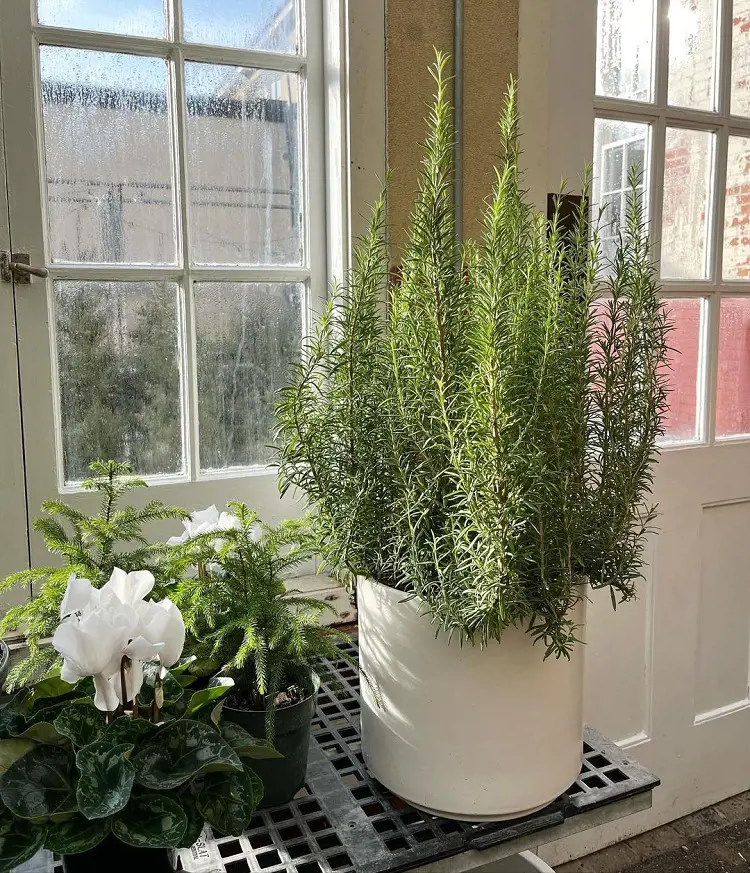
Rosemary is a relatively low-maintenance herb, but it does have a few basic needs.
a. Sunlight
Rosemary flourishes when exposed to a sufficient daily sunlight duration, preferably a minimum of six hours. Analogous to our requirement for food and water, sunlight serves as Rosemary's essential energy source. It constitutes a daily vitalizing regimen, crucial for its overall well-being.
To ensure the optimal growth and vitality of your Rosemary plant, it is imperative to facilitate a sun exposure period of approximately six hours each day, allowing the plant to derive the necessary light for its sustained development and robust health.
b. Water
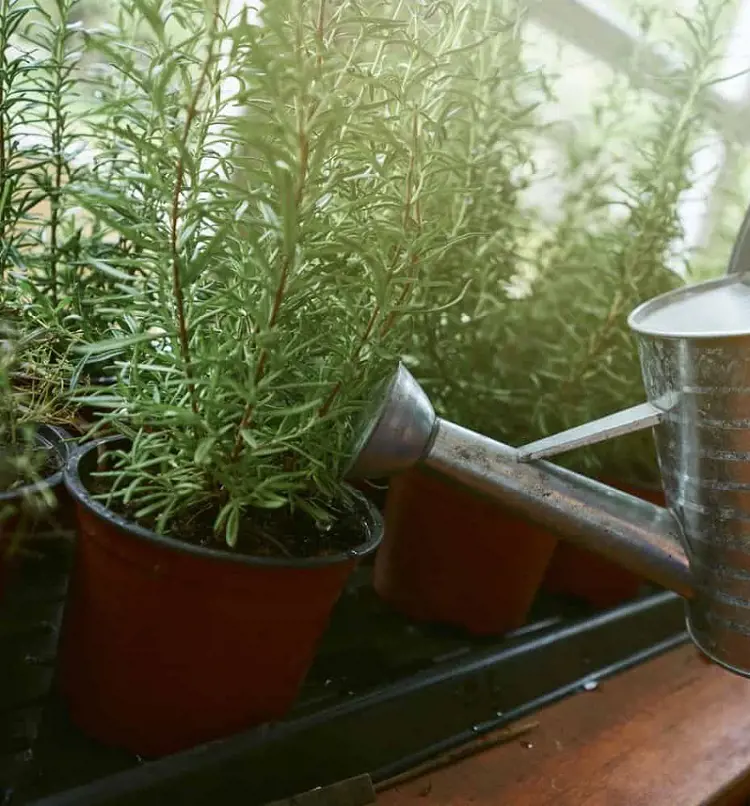
When watering your plant, focus on the base instead of spraying water overhead. This prevents diseases on the foliage, keeping your plant healthier. Opt for a drip irrigation system or a soaker hose for efficient watering. Imagine it as giving the plant a drink at its roots, avoiding unnecessary wetness on the leaves.
This targeted approach ensures that water reaches the soil directly, promoting optimal hydration and minimizing the risk of fungal issues. It's like a tailored hydration plan to maintain a thriving and disease-resistant plant.
c. Fertilizer
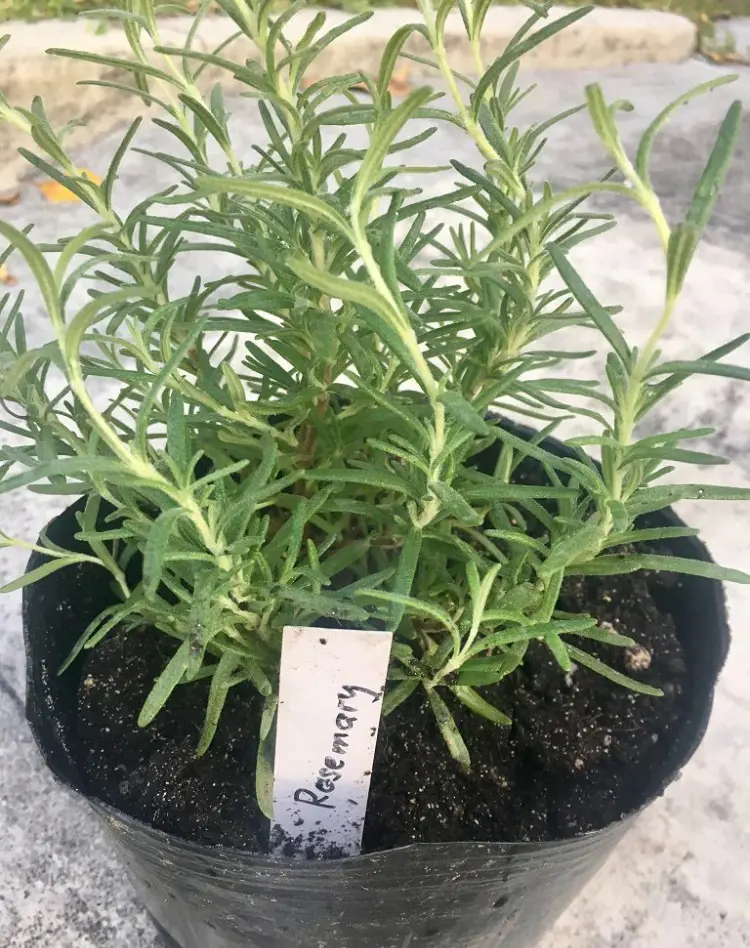
Rosemary doesn't demand frequent fertilization; a light compost application in the spring is ample. Think of it as providing a nourishing spring meal. Unlike some plants that crave constant feeding, Rosemary thrives with a modest dose. The compost acts as a natural, slow-release fertilizer, ensuring the plant receives essential nutrients for sustained growth.
This low-maintenance approach mimics Rosemary's preference for a balanced diet, allowing it to flourish without the need for excessive or frequent fertilization throughout the year.
d. Pruning
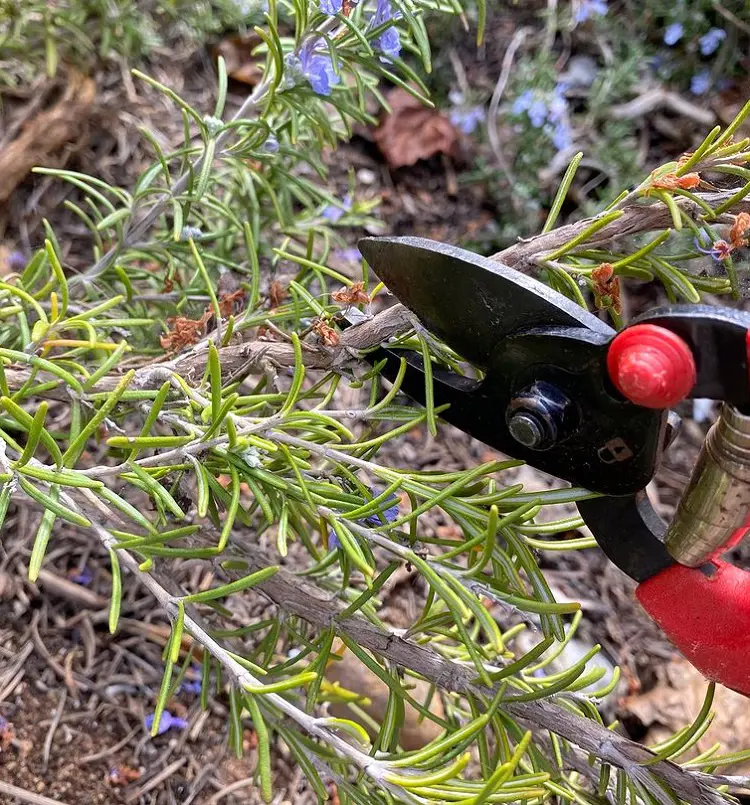
Regular pruning is like a grooming session for your rosemary, stimulating lush, bushy growth. By gently pinching off the tips, you guide the plant's shape and encourage lateral branching, fostering a fuller appearance. In spring, consider a more drastic approach with hard pruning for older plants.
Removing about one-third of the growth renews the plant, promoting vigorous and healthy development. It's like giving your rosemary a haircut – shaping, refreshing, and invigorating it to maintain an attractive and vibrant presence in your garden.
Winter Care of Rosemary
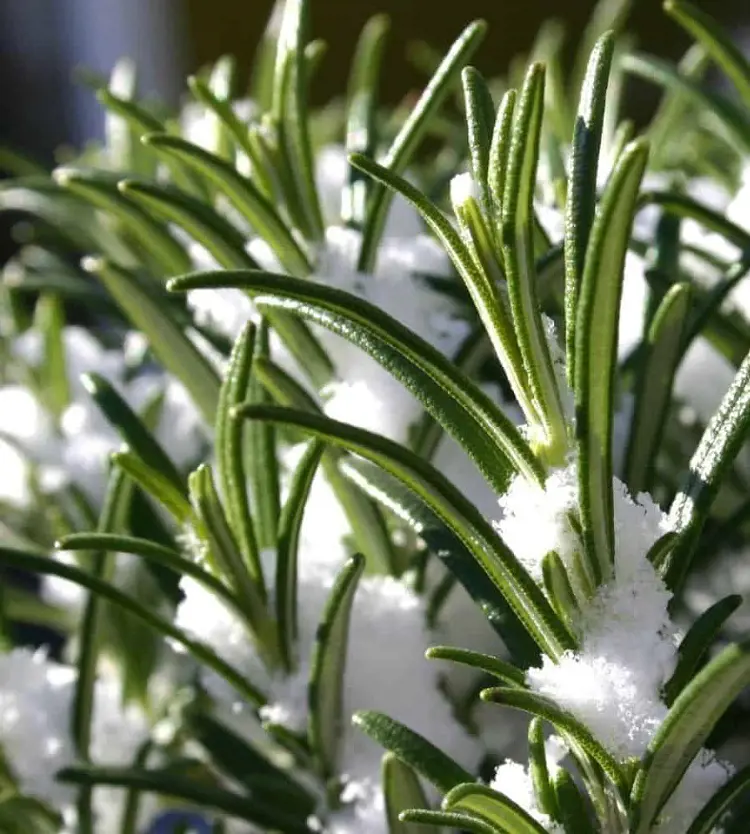
Caring for rosemary in winter is crucial due to its sensitivity to cold temperatures. As a Mediterranean herb, rosemary can suffer from freezing conditions, leading to branch damage. Additionally, the plant's preference for well-drained soil makes excess winter moisture a concern, as it may cause root rot.
Here's what you can do to protect your rosemary from overwintering:
a. Mulching
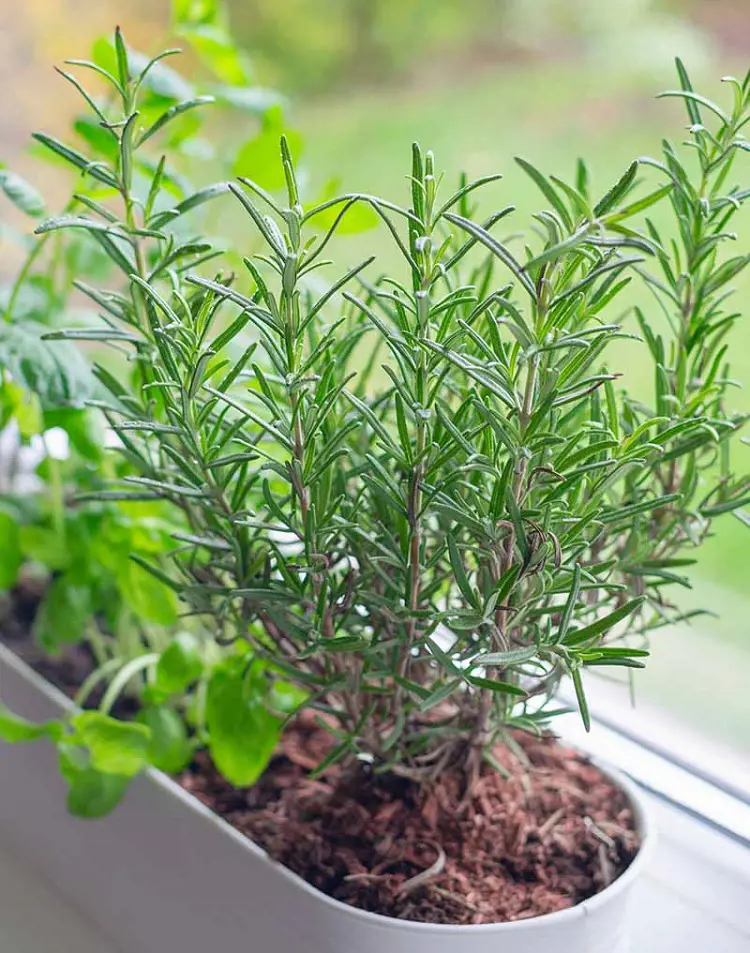
In late fall, apply a layer of mulch around the base of your plants as a protective measure. Picture it as a cozy blanket for the roots during winter. The mulch acts as insulation, shielding the roots from harsh temperatures and fluctuations. This layer helps regulate soil temperature, preventing extreme cold from reaching the plant's vulnerable root system.
By mulching, you create a barrier against winter's chill, promoting a conducive environment for root health and ensuring your plants are better equipped to endure the challenges of the colder season.
b. Protection

In regions with colder climates, it's advisable to take protective measures for rosemary. For potted plants, bringing them indoors during colder periods safeguards them from freezing temperatures. Outdoor rosemary benefits from frost protection, such as covering with a breathable fabric or employing frost cloths. These precautions shield the plant from the potentially damaging effects of cold weather.
This will enhance the chances of your rosemary surviving the winter, ensuring its health and vitality when spring arrives.
Pest and Disease Management
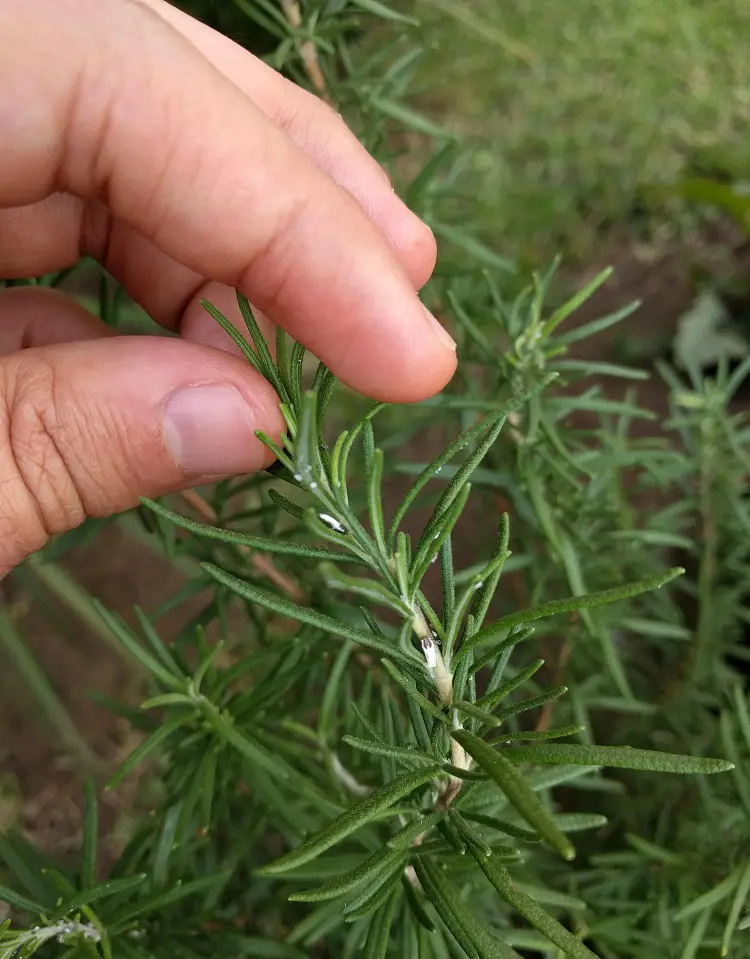
Another important aspect of caring for rosemary is to protecting it from pests and diseases as it maintains the plant's health and vitality.
Common Pests and Diseases of Rosemary:
1. Aphids
- Cause: Small, soft-bodied insects that suck sap from the plant, causing leaves to yellow and distort.
- Solution: Use insecticidal soap or neem oil. Introduce natural predators like ladybugs.
2. Spider Mites
- Cause: Tiny arachnids that feed on plant juices, leading to stippling, discoloration, and webbing.
- Solution: Increase humidity, spray with water to dislodge mites, and use insecticidal soap or neem oil.
3. Powdery Mildew
- Cause: Fungal infection resulting in a white powdery coating on leaves, affecting plant growth.
- Solution: Ensure good air circulation, avoid overhead watering, and apply fungicides if necessary.

4. Root Rot
- Cause: Excessive soil moisture leading to fungal growth and root decay.
- Solution: Improve drainage, allow soil to dry between waterings, and use well-draining soil.
5. Rosemary Blight
- Cause: Fungal disease causing leaf spots, wilting, and overall decline.
- Solution: Remove and destroy affected plant parts, and apply fungicides preventively.
6. Rosemary Beetle
- Cause: Brightly colored beetles that feed on rosemary leaves, causing defoliation.
- Solution: Handpick beetles, introduce natural predators, and use insecticidal soap.

7. Whiteflies
- Cause: Small, winged insects that suck plant juices, leading to yellowing and wilting.
- Solution: Use insecticidal soap, and introduce natural predators like predatory beetles.
Preventive Measures
- Well-draining Soil: Ensure the soil allows water to drain freely.
- Proper Watering: Avoid overwatering and water at the base to prevent fungal issues.
- Regular Pruning: Promote air circulation by pruning, preventing disease spread.
- Natural Predators: Encourage beneficial insects like ladybugs and predatory beetles.
Harvesting Rosemary
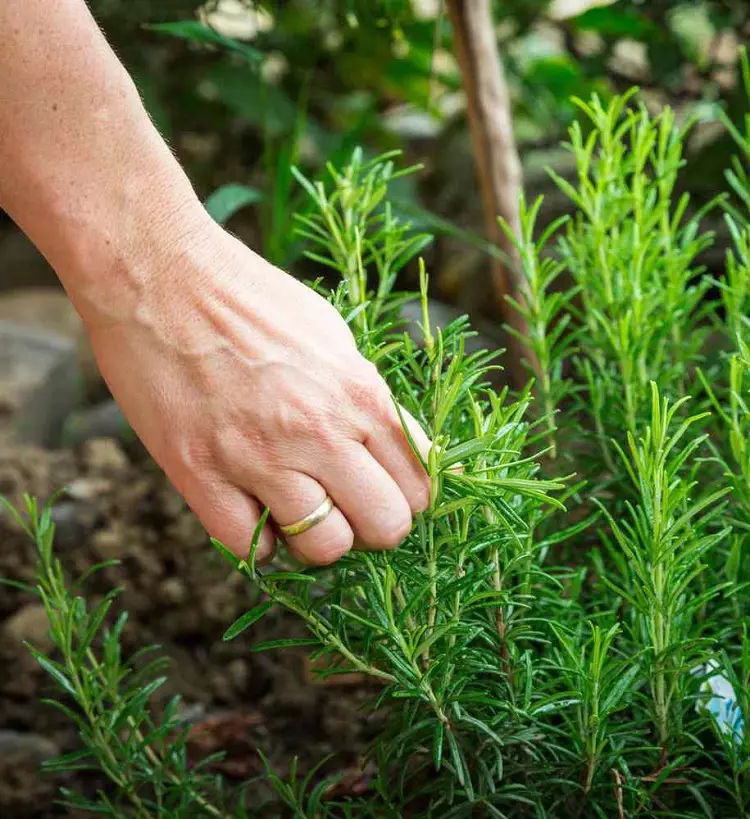
Rosemary can be harvested throughout the year, but the flavor of the leaves is often most potent and aromatic just before the plant blooms. Here are some guidelines for harvesting rosemary:
- Regular Harvesting: You can start harvesting rosemary once the plant reaches at least 6 to 8 inches in height. Snip individual stems as needed.
- Pre-Bloom Stage: For the best flavor, harvest rosemary just before it flowers. At this stage, the essential oil content is high, resulting in a more flavorful herb.
- Morning Harvest: Opt for morning harvests when the aromatic oils are at their peak concentration. Avoid harvesting in the hot afternoon sun.
- Year-Round Harvest: Rosemary can be harvested at any time during the year. However, winter harvesting may yield milder flavors compared to the more robust taste in the growing season.
Harvesting rosemary frequently not only provides you with fresh herbs but also helps shape the plant and encourages bushier growth. Use clean, sharp scissors or pruning shears to cut the stems, and enjoy the aromatic and flavorful leaves in your culinary creations.
Culinary and Medicinal Uses
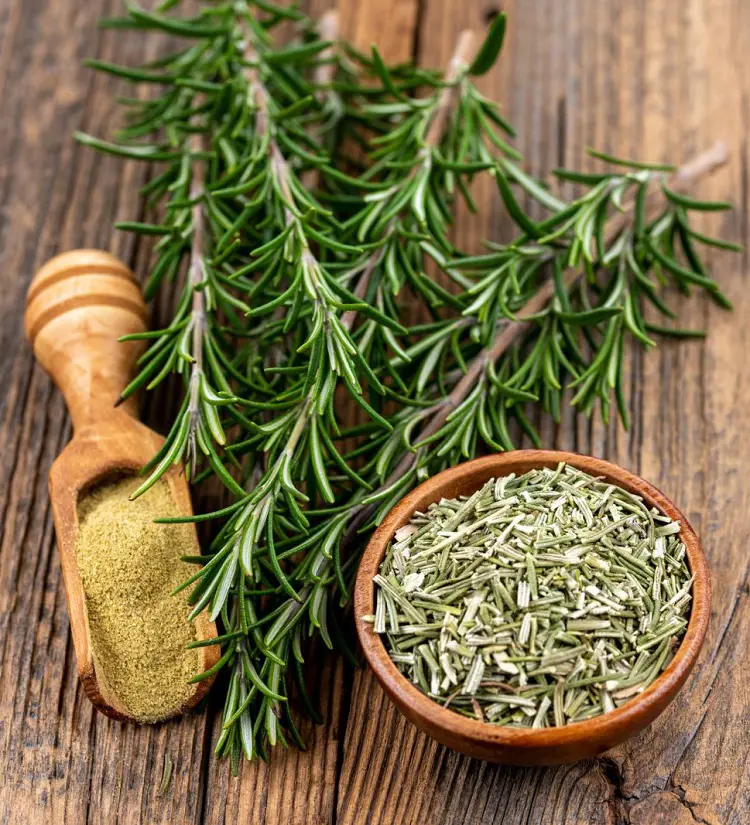
Rosemary is a versatile herb that adds a robust flavor to a variety of culinary dishes. Commonly used in Mediterranean cuisine, its pine-like aroma and earthy taste complement meats, stews, soups, and roasted vegetables. Rosemary-infused oils and vinegar are popular for imparting a subtle herbal essence to marinades and dressings.
Additionally, it can enhance the flavor of bread, focaccia, and savory baked goods. Rosemary's versatility makes it a staple in kitchens worldwide, providing a unique and aromatic touch to an array of dishes.
Medicinal Uses
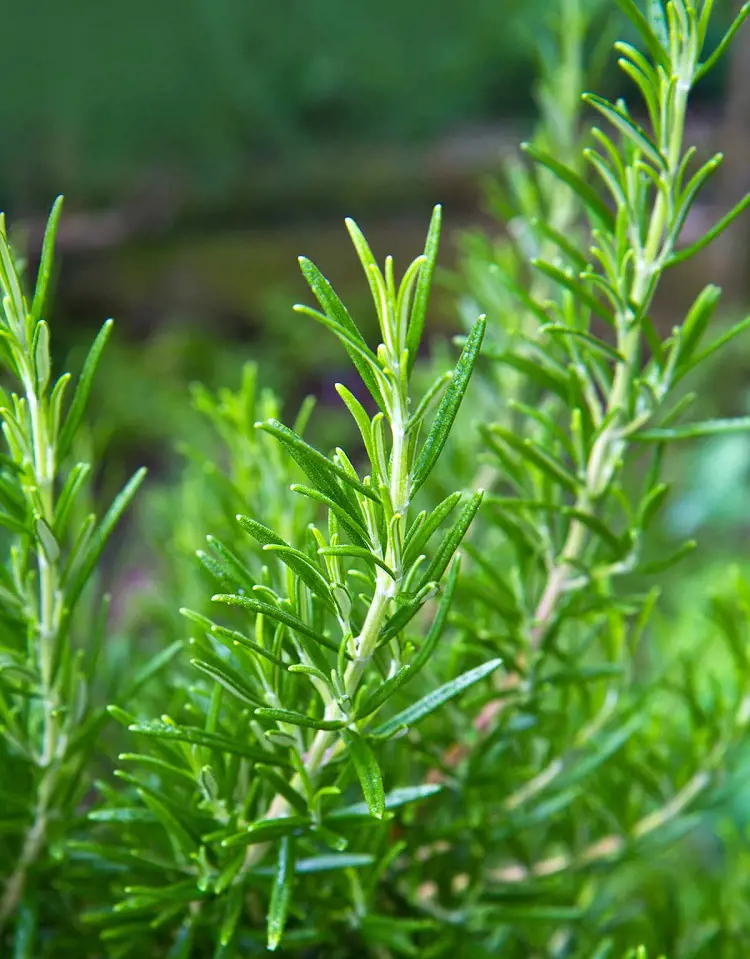
Beyond its culinary applications, rosemary is traditionally believed to offer medicinal benefits. While scientific research is ongoing, rosemary has been associated with various potential health advantages. It is often linked to:
- Digestive Aid: Rosemary may aid digestion by stimulating the production of digestive enzymes, potentially easing indigestion and discomfort.
- Memory Enhancement: Some studies suggest that the aroma of rosemary may have cognitive benefits, potentially improving concentration and memory retention.
- Anti-Inflammatory Properties: Rosemary contains compounds with anti-inflammatory properties that may contribute to overall health and wellness.
- Antioxidant Effects: The herb is rich in antioxidants, which may help combat oxidative stress in the body.
- Topical Applications: Rosemary oil is used topically in aromatherapy and massage for its potential to promote relaxation and alleviate stress.
Troubleshooting
Common problems while growing rosemary are:
a. Yellowing Leaves
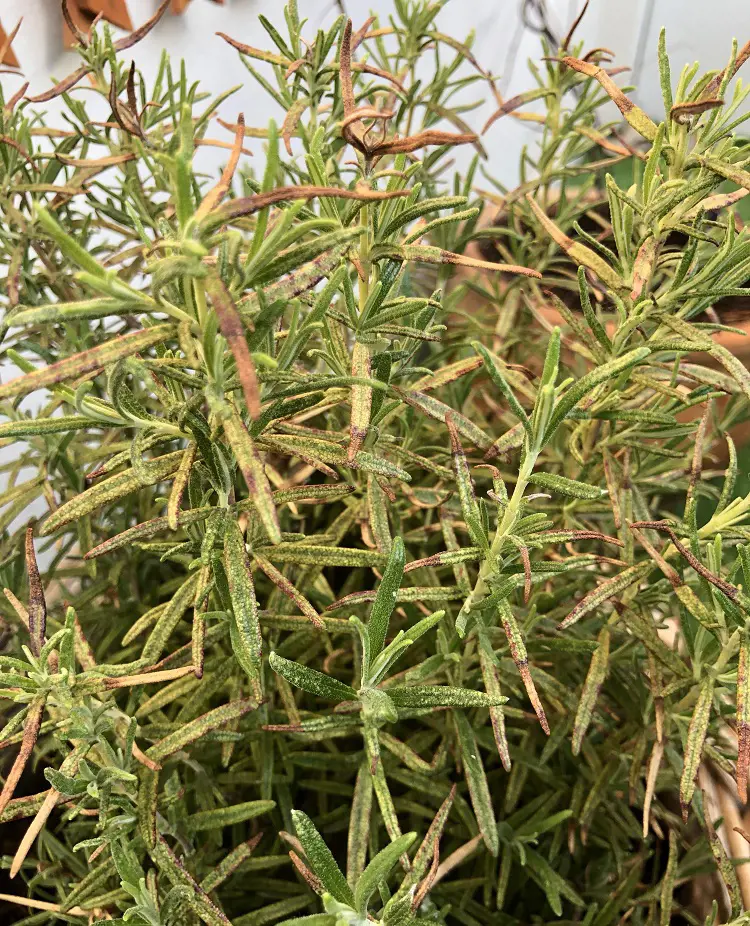
Yellow leaves often signal potential issues with water. Overwatering or inadequate drainage can lead to root problems. To address this:
- Solution: Adjust the watering frequency, allowing the soil to dry out slightly between waterings. Ensure the pot or planting area has proper drainage to prevent waterlogged soil.
b. Leggy Growth
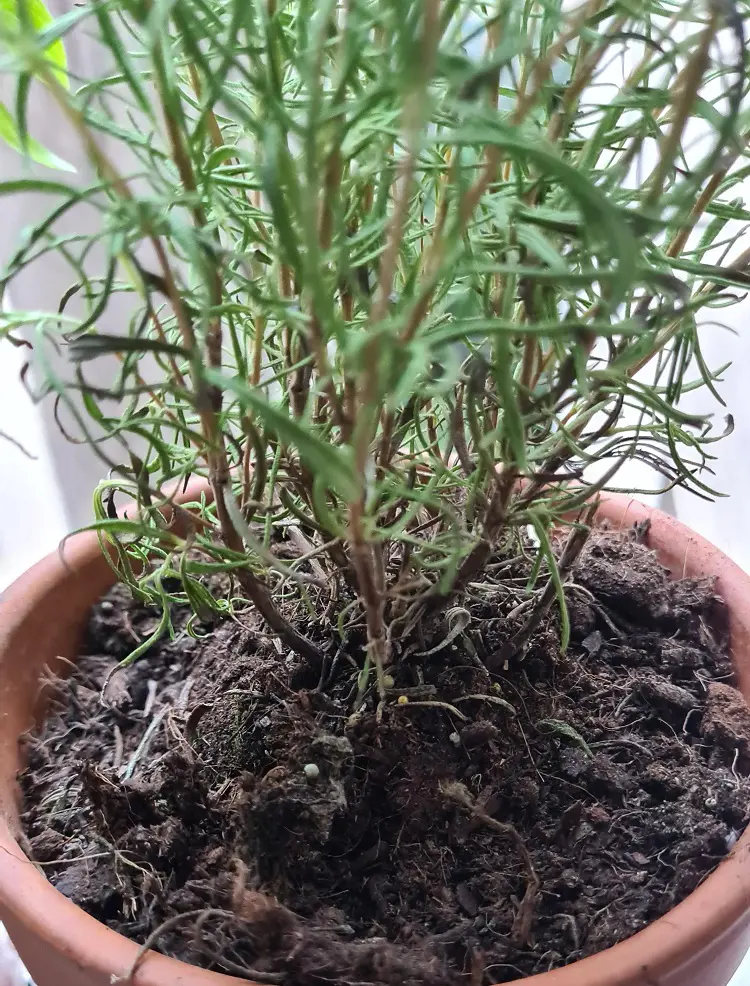
Leggy growth, characterized by elongated and sparse stems, indicates the need for pruning to promote bushier development.
- Solution: Prune the plant back by cutting off the top growth. This encourages lateral branching and a more compact, robust appearance. Regular pruning helps maintain a desirable shape.
Regularly monitoring your rosemary and addressing these issues promptly contributes to the overall health and vigor of the plant.
Recent posts
Plant Care
Plant Care
How To Take Care Of An Orchid Plant? 11 Tips And Tricks
If you love gorgeous orchids but are worried they're too high-maintenance, don't worry. This guide is like a cheat sheet for orchid newbies. Forget fancy words and confusing schedules — we're talking about how to take care of an orchid pla...
Plant Care
How To Grow and Care For Peace Lily Plant
The Peace Lily is an indoor plant that is most valued for its beautiful and shiny green leaves as well as the white blooms. Hard and tolerant, it’s naturally a low-maintenance addition to your plant collection. If you are confused, let us tell ...
Plant Care
Pothos Plant Care And Growing Guide
Adding a Pothos plant (Devil’s Ivy) to your home benefits the environment and aesthetic of your personal space. It's easy to maintain and is loved for it's ability to enhance indoor air quality by removing toxins like formaldehyde, benzene, and...
Plant Care
Snake Plant Care and Growing Guide
Snake plants require low maintenance, and low light and are almost impossible to kill, making them a perfect plant for beginners and seasoned gardeners. In this guide, we will explore essential care tips and optimal growing conditions for snake plant...
Plant Care
How To Plant, Grow and Care Majesty Palm
The majestic palm, scientifically known as Ravenea rivularis, makes for a stunning indoor tree with its lush and grand fronds. Originating from Madagascar's river banks, this resilient houseplant is cherished not only for its beauty but also for its ...
Plant Care
How To Grow And Care For A Hosta Plant
Hosta plants are widespread perennials, often grown for their beautiful and diverse foliage. They are extremely easy to care for and can thrive in various conditions, particularly shade or semi-shade. These hardy plants can last for many years and re...



